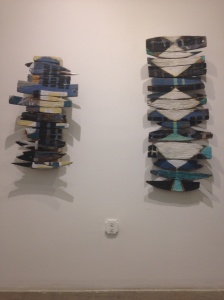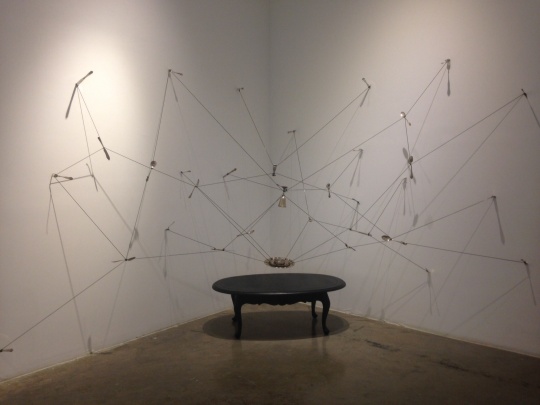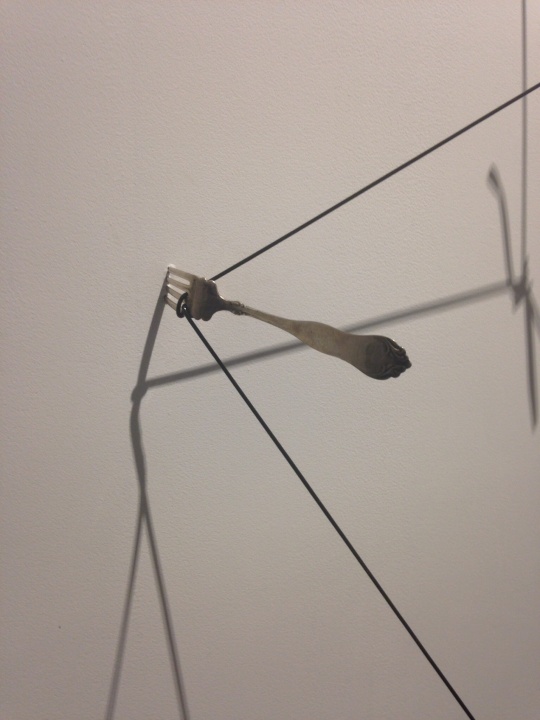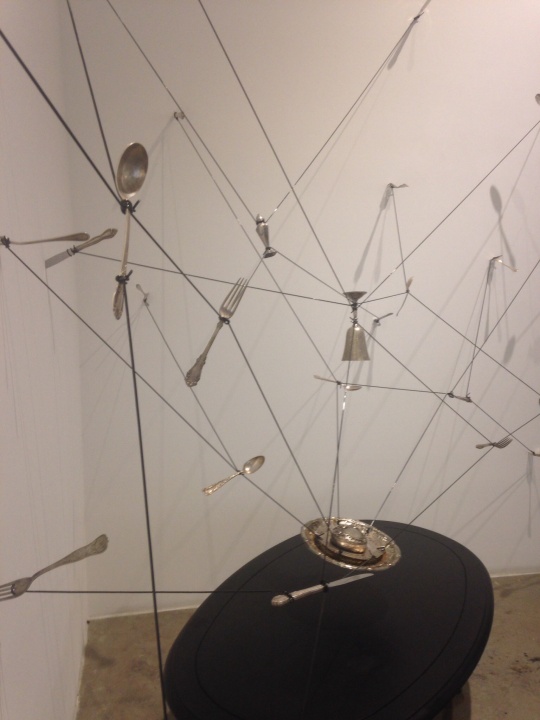Colors of a Rug
Each Panel was a meaning
Each color was an emotion
Each design was a place
A memory set in the brain
Forever a thought in time and space
Reflection
Where we are born
And where we die
Are two very special locations
We carry our homes with us for eternity
Never really leaving it behind
It’s always with us
Keeping in time
A poem by me
Neighbors
I walk out of the door of my home and I am immediately confronted with the necessity to impress the neighbors. Stand up straight, speak clearly and gently to your siblings and do not, do not raise your hand above them as to reprimand them for their behavior. Not in front of the neighbors. Smile. Smile open your mouth wide to show you are happy. Happy to be residing in a world where you don’t feel you belong. Happy to be putting up this happy little front.
Do not shout in anguish over a scrapped knee or laugh loud and bright at the witty sayings that flow from the innocent mouths of your kin. Not in front of the neighbors. Do not think about the anger or hurt you feel from those who should be making it alright. The fire licking your insides, the everlasting smoke creating the everlasting tears.
Paint your face. Play your part. Resemble the beloved actor. That’s what the neighbors want.
Wynwood is a large plate of art with a side of spontaneous creativity. Being one of the largest outdoor graffiti exhibits, Miami is very proud of our art scene here in Wynwood.
Wynwood houses the annually celebrated Art Basel art festival every December. Hundreds artists from around the world converge on Miami Beach to take part in this infamous festival. During Art Basel, you can walk through the streets and watch artists paint murals all over Wynwood and attend galas in the many galleries. This year, Basel is set to run from December 4-7.
Another interesting aspect of the Wynwood Art District, is that it is alway changing. You can see an artist working meticulously on a mural, but the next mont, it has been covered by another artist’s work; it is like on going circle of art.
From the young to the old, the modern to the classic, Wynwood has something that will surprise everyone.
On Friday, July 18, I was able to visit the “Reverse: Rewriting Culture.” group exhibit presented by the following artists; Consuelo Castaneda, David Rohn, Eduardo Rivera Salvatierra, Fernando Bayona González, Fernando García, Jonathan Wahl, Juan Pablo Ballester, and Nereida Garcia-Ferráz housed at the Dot Fifty-One Gallery in Wynwood.
The story behind the exhibit was interesting. They wanted to show that there is no such thing as “gay art” or “lesbian art” or “transgender art”, but I felt it was unnecessary. The fact that these artists felt the need to show the public that there is no difference between a heterosexual artist’s work and a homosexual artist’s work is ridiculous. Don’t get me wrong, each and every artist has their own flare and style that makes them unique, but the fact that artists are judged because of their sexuality is not how we should be thinking in this day and age. Our sexuality now throws us into a one sized coffin, but no one is the same size.
Two pieces of art caught my attention; the first one being an untitled piece by Nereida Garcia-Ferráz. At first glance, I saw driftwood. Pieces of wood ripped from a ship’s hull as it crashed into a cluster of rocks. The colors weathered and dull from the salt water; the wood patterns showing through the hindered paint. This sculpture also gives us a taste of what the exhibit is trying to convey. I believe that the artist is saying that this is what homosexuality looks to heterosexual people. Rearranged and deranged. No longer able to be used for what we think it should be used for.
Once the sculpture had been explained, I could see the stadium chairs they were. Garcia-Ferráz took chairs from the abandoned Miami Marina Stadium, tore them apart, and recreated this sculpture. I found it as such a great piece. Because there was no evident title, the spectator was able to imagine what story this piece was straying to convey.
The second piece, to much of my disappointment, did not have a title, description, or name of an artist anywhere near. (This was one of the problems I had with the gallery in general.) I found this piece very interesting. It was an installation of sorts. Forks, knives, and spoons could be seen protruding out of the walls, all of them connected by wire wrapped with rubber. Also connected was a goblet, salt shaker, and plate. All of these objects hung ghostly above a low, black table. It looked like a spider web.
All in all, I found the trip to the gallery interesting. I enjoyed experiencing the different emotions each piece was able illicit from me.
Carlos Noguera is a Master Teaching Artist this summer at the arts internship run by Arts 4 Learning at the Bakehouse. Originally from Venezuela, Noguera grew up in Miami. He attended Tufts University which is affiliated with the School of Museum of Fine Arts in Boston, where he received his Bachelors of Fine Arts in Education, he graduated with his Ed.M. from Harvard Graduate School of Education.
I was able to hold a question and answer with him in the art room.
Question: Do you believe that talent is something something you are born with?
Answer: “No, I believe it is developed through work and experience, but for some it is already there.
Question: Does your artwork have a theme?
Answer: No, no [laughter] nothing specific. I usually create what inspires me; I use my surroundings. I like combining different things.
Question: What exactly do you create?
Answer: This summer, it is currently collages. Before that, it was drawings and before that sculpting. I enjoy trying a lot of different mediums. When I go home, there isn’t that much to work with, but here in Miami I have a lot to work with.
Question: What brought you to the arts?
Answer: I was always into the arts; visual arts primarily. I really got into art while I was at Design and Architecture Senior HighSchool. I was inspired by my teachers to study Art Education during my senior year. I loved the idea of working with children and art together. Before that, I just wanted to be a free lance artist.
Question: How do you feel while creating?
Answer: Depends. It depends on if people are around. When people are watching me as I work, I get self conscious; especially during demos.
Question: Has art ever helped you through a tough time?
Answer: Yes, of course. I can always escape from my problems in my art, but that is probably not a good thing. It is important to face our problems.
It is a funny thing how art in its most general form is always interconnected with its many, seemingly individual, paths.
The first time I heard about Pamela Palma and her artistic line of fabrics, conceptual tapestries, accessories, and clothing was through my music teacher who performed with her husband at one of Palma’s art showings. It was just my luck to learn that Palma, originally from Buffalo, NY, is an artist in residence at the Bakehouse Art Complex here in Miami.
I had the pleasure of speaking with Palma in her studio at the Bakehouse and got some great insight from her. She shared with me her beliefs on talent. “Talent is something you are born with, at least for me, I was.” She continued to talk about how desire to do whatever it is you want must be strong enough to bring forth that natural born talent. Palma had the desire to sew and knit like her mother and sisters, and their mother. “From a very young age” she described to me, “I was surrounded by women who were constantly creating new things with their hands. I wanted to do the same.”
Living in the more rural part of Buffalo, Palma explained that a lot of free time was left in her lap during the winter months which she used to learn knitting and sewing from her grandmother who would patiently sit with her when she was four years old. As time ticked by, Palma’s desire and prowess with needles only continued to grow. She first experienced sewing with a machine in a home ec class. There, her mechanical technique blossomed. Palma was able to work faster and try commercial designs and patterns. Her artistic knowledge stretched further as she experimented with paint-by-number activities. “I would get them for Christmas. It was a way for them to keep me busy. I would experiment with the colors. If pink and blue were next to each other, I would try to have them pass through each other.” Palma mixed and experimented with colors numerously and eventually created her own colors. Towards the end of eighth grade, Palma made her own clothes. Not out of necessity, but because she had her own ideas concerning fashion.
She continued her passion for fashion and working with fabrics in college, majoring in fashion design. Because of this major choice, Palma had to take a weaving course where she worked with looms. She instanly fell in love with creating tapestries and continues weaving to this day.











